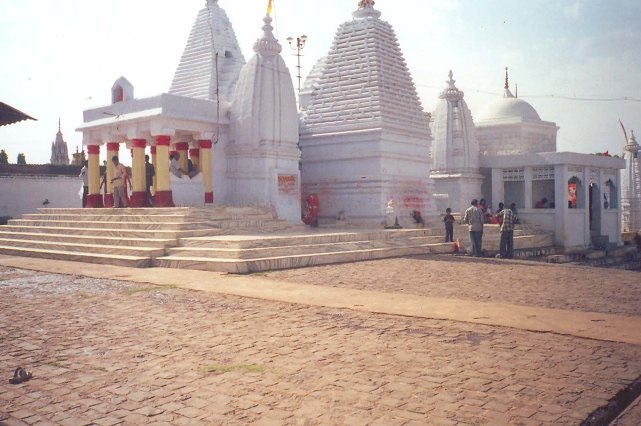
State:Madhya Pradesh
Area:82 sq.km
Altitude:212 metres
Rainfall:152 cms
Temperature:Summer - Max: 41 Min: 21
Winter - Max: 27 Min: 10
Language(s):Hindi
Best Time to Visit:October to March
STD Code:0761
Overview
It is situated in the heart of the state Madhya Pradesh.Jabalpur is one of the largest and most important cities in the state. It is located on the banks of Holy River of Narmada and is around 336 km from Bhopal. Jabalpur has served as a capital to many ruling dynasties like Kalchuri and Gond. After 1817, Jabalpur was under the control of British who made it the commission headquarters of Narmada territory. The city is covered with mountains from all sides thus deriving its name from an Arab word 'Jabal', which means mountain.The city has become world famous due to the presence of Marble Rocks on the outskirts. Jabalpur is also the closest to Kanha National Park and Bandhavgarh National Park that give the city an extra edge over other parts of Madhya Pradesh.
History
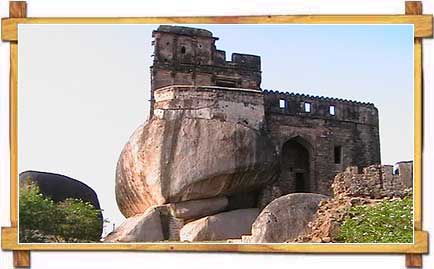
The origin of Jabalpur goes back to ancient times. It was then known as Tripuri and was governed by Hayahaya rulers. The ancient Indian epic of Mahabharata has references to his city. It became a part of the great Mauryan and the Gupta Empires. In AD 875, it was taken over by the Kalchuri dynasty who made Jabalpur their capital. In the 13th century, the Gonds seized it and made it their capital. By the early 16th century, it had become the powerful kingdom of Gondwana. From time to time, the Mughal rulers tried to overrun it. The legendary Gond Queen Rani Durgavati died fighting the Mughal forces led by the great Mughal Emperor Akbar. It finally fell to the Marathas in 1789 and was taken over by the British in 1817, when they defeated the Marathas. The British made Jabalpur the commission headquarters of the Narmada territories and established a cantonment here.
Places of Interest in Jabalpur
Madan Mahal Fort
Built by the Gond ruler,Raja Madan Shah, in 1116 atop a rocky hill, the fort dominates the skyline and provides a panoramic view of the town and the country-side around it.
Sangram Sagar and Bajana MathThese medieval constructions were built by the famous Gond king,Sangram Shah between 1480-1540.
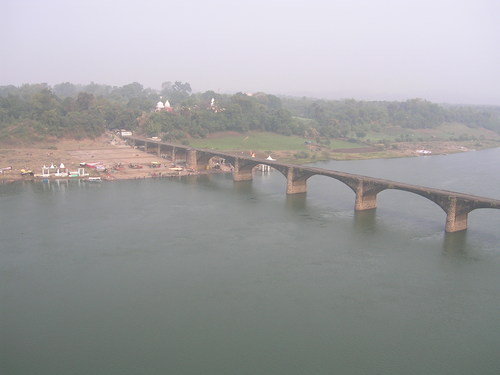 Tilwaraghat
Tilwaraghat
This the place from where Mahatma Gandhi's ashes were immersed in the Narmada, and venue of the open session of the Tripuri Congress in 1939;the 12th century Mala Devi Mandir; Pisan Hari Jain Temples and Roopnath are some of the other places in and around Jabalpur which merit a visit.
BedaghatThis is the Small village of Jabalpur tehsil situated on the bank of river Narmada.It is
widely famous for its marble Rocks and is at a distance about 21 Km from Jabalpur by road.
Soaring in glittering splendour, the Marble Rocks at Bhedaghat rise to a hundred feet
on either side of the Narmada. The serene loveliness of the scene is one of cool quiet,
the sunlight sparkling on the marble-white pinnacles and casting dappled shadows on the
pellucid waters. Sunlight, now glancing from a pinnacle of snow-white marble reared
against the deep blue of the sky as from a point of silver ; touching here and there
with bright lights the prominences of the middle heights; and again losing itself in
the soft bluish grays of their recesses….. Here and there the white saccharine
limestone is seamed by veins of dark green or black volcanic rock; a contrast
which only enhances, like a setting of jet, the purity of the surrounding marble."
either side of the Narmada. The serene loveliness of the scene is one of cool quiet,
the sunlight sparkling on the marble-white pinnacles and casting dappled shadows on the
pellucid waters. Sunlight, now glancing from a pinnacle of snow-white marble reared
against the deep blue of the sky as from a point of silver ; touching here and there
with bright lights the prominences of the middle heights; and again losing itself in
the soft bluish grays of their recesses….. Here and there the white saccharine
limestone is seamed by veins of dark green or black volcanic rock; a contrast
which only enhances, like a setting of jet, the purity of the surrounding marble."
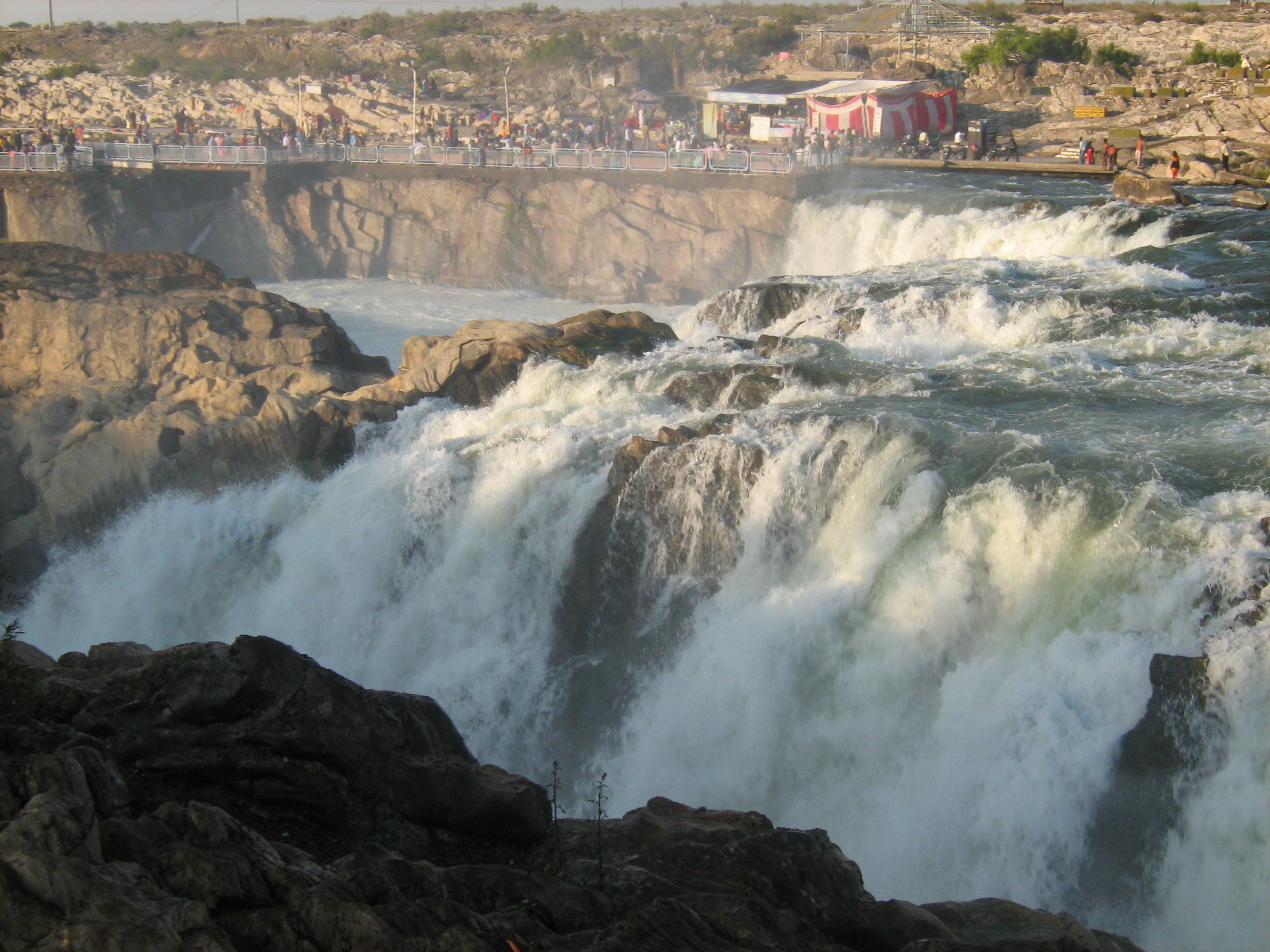
The Narmada, making its way through the Marble Rocks, Narrows down and then plunges in a waterfall Rocks,narrow down and then plinges in a waterfall known as Dhuandhar or the smoke cascade. So powerful is the plunge that its roar is heard from a far distance, The falls and the breaking of the volume of water at the crest present an awesome spectacle of Nature's power unleashed.
Chausat Yogini TempleSituated atop a hill rock and approached by a long flight of steps,the Chausat Yogini Temple commands a singularly beautiful view of the Narmada flowing through the jagged Marble Rocks. Dedicated to Goddess Durga, this 10th century temple has exquisitely carved stone figures of deities belonging to the Kalchuri period. According to a local legend,this ancient temple is connected to the Gond Queen Durgavati's palace through an undergroung passage.
Tripur Sundari TempleThis temple is situated at 12kms from the city on Bhedaghat road in a village Tewar.
Rani Durgavati Memorial and Museum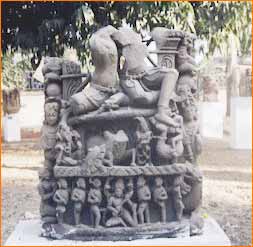
This museum is dedicated to the memory of the queen Durgavati.this museum houses a fine collection of sculptures,inscriptions and prehistoric relics.
Pisanhari ki MadiyaThis is another very famous Jain Temple(Pisanhari ki Madiya).
How to Reach Jabalpur
By Rail
Jabalpur railhead is situated on the main Mumbai-Howrah line and most trains on this line have a stop here. There are overnight trains running from Kolkata, Bangalore, Mumbai and Delhi.
By RoadTransport Buses from almost all cities of Madhya Pradesh frequent to Jabalpur. Some private transport operators also have their luxury and semi-luxury coaches plying in and out of the city.
By AirJabalpur has its own domestic airport and receives regular flights from Delhi, Bhopal and other major cities of India.

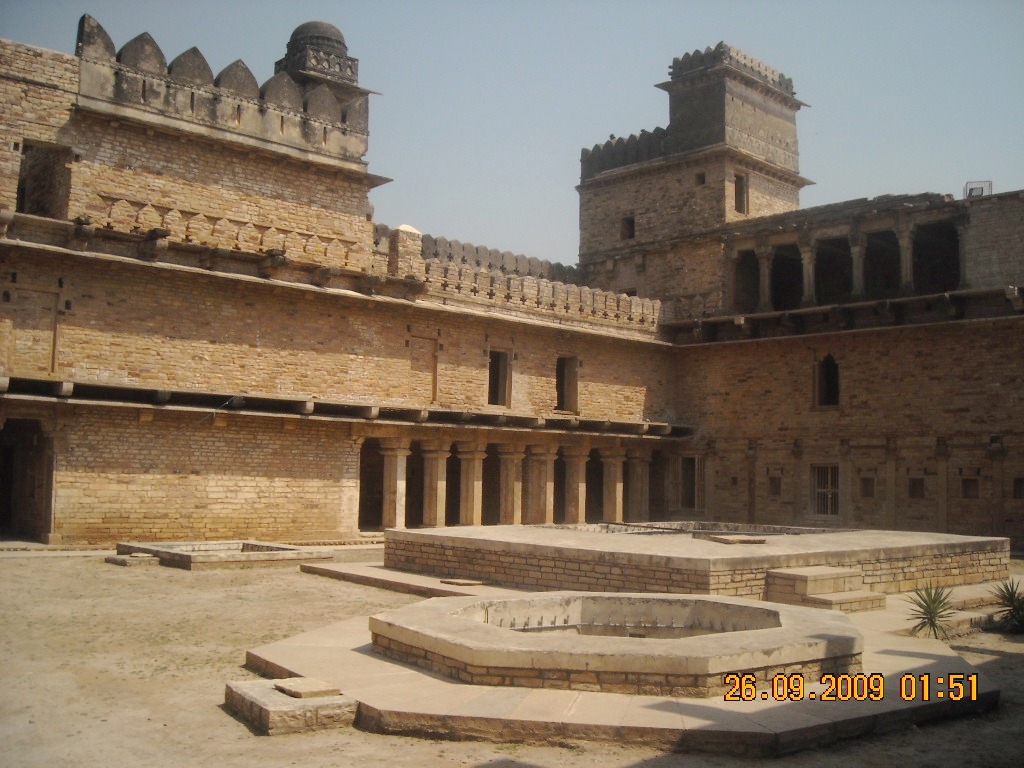
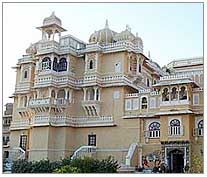

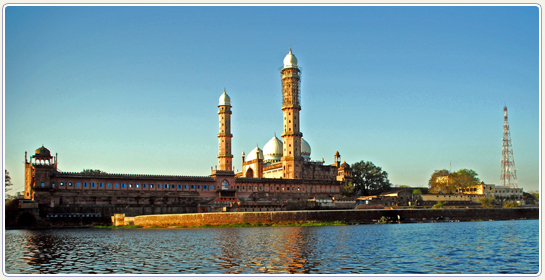
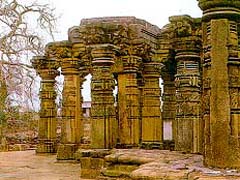
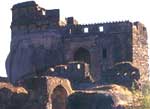
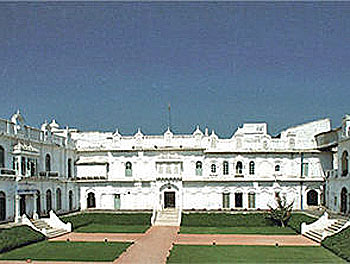
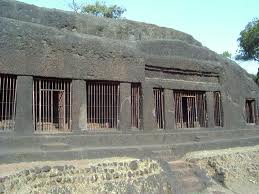




Wild Life Parks